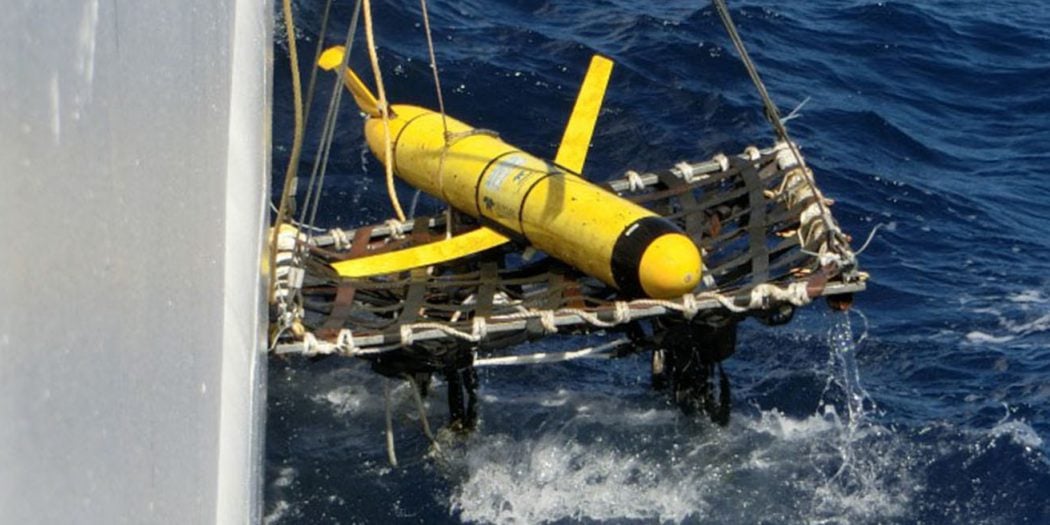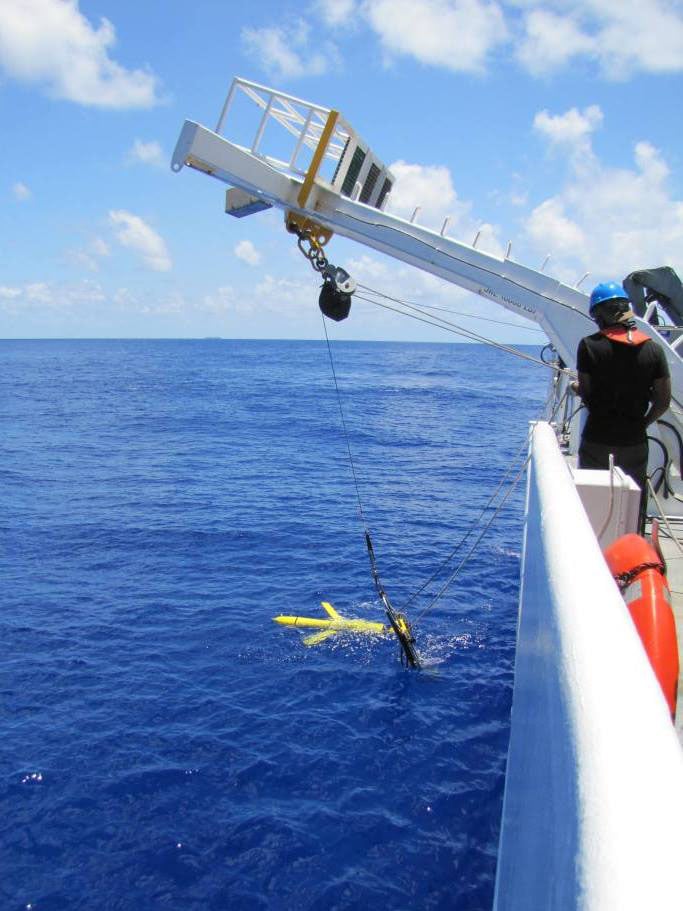
Chinese forces returned a U.S. Navy buoyancy glider to the service, the Pentagon announced in an early Tuesday morning statement.
The crew of U.S. guided missile destroyer USS Mustin (DDG-89) recovered the glider from the crew of the People’s Army Liberation Navy Dalang III vessel that took the unmanned glider from waters near the Philippines last week.
“Today, the People’s Liberation Army Navy vessel 510 returned a U.S. Navy Ocean Glider Unmanned Underwater Vehicle (UUV) to the United States, near the location where it had been unlawfully seized on Dec. 15.,” said Pentagon spokesman Peter Cook in the statement.
“USS Mustin received the vehicle for the U.S. in international waters approximately 50 nautical miles northwest of Subic Bay.”
The Chinese ship took the glider – one of two that was scheduled to be recovered by the U.S. Navy oceanographic survey ship USNS Bowditch (T-AGS-62) – near the same spot in international waters.
Before the crew of Bowditch could bring the glider aboard, a small boat from the Chinese ship that had been shadowing the U.S. ship was launched and took one of the two gliders.

Chinese officials claimed the glider was a hazard to navigation and they recovered the unmanned vehicle for the safety of the water. The U.S. took issue with Beijing’s interpretation of events.
“This incident was inconsistent with both international law and standards of professionalism for conduct between navies at sea,” cook said in his statement.
“The U.S. has addressed those facts with the Chinese through the appropriate diplomatic and military channels, and have called on Chinese authorities to comply with their obligations under international law and to refrain from further efforts to impede lawful U.S. activities.”
The glider is one of more than a 100 the U.S. Navy uses to measure ocean data.
“The Navy uses the gliders to collect ocean temperature, salinity and depth information, and transmit the unclassified data to Naval Oceanographic Office (NAVOCEANO) for assimilation into NAVOCEANO’s operational ocean models,” Rear Adm. Tim Gallaudet,
Oceanographer of the Navy, wrote in a Monday Navy Live blog post.
“They are used by scientists and professionals around the world working in academia, the oil and gas industry as well as the military. Gliders have been the workhorses of the operational Naval Oceanography program for nearly two decades.”
The seizure of the glider prompted an early clash between Beijing and President-elect Donald Trump ahead of Trump’s inauguration next month.
Statement by Pentagon Press Secretary Peter Cook on Return of U.S. Navy UUV
Today, the People’s Liberation Army-Navy vessel 510 returned a U.S. Navy Ocean Glider Unmanned Underwater Vehicle (UUV) to the United States, near the location where it had been unlawfully seized on Dec. 15. USS Mustin (DDG 89) received the vehicle for the U.S. in international waters approximately 50 nautical miles northwest of Subic Bay. The seized UUV is a sovereign immune vessel of the U.S. Navy which was conducting routine operations in the international waters of the South China Sea in full compliance with international law. It had just completed a pre-programmed military oceanographic survey route and was returning to the nearby USNS Bowditch (T-AGS 62). Ocean Gliders such as this are used regularly by the U.S. Navy and other militaries throughout the world.
This incident was inconsistent with both international law and standards of professionalism for conduct between navies at sea. The U.S. has addressed those facts with the Chinese through the appropriate diplomatic and military channels, and have called on Chinese authorities to comply with their obligations under international law and to refrain from further efforts to impede lawful U.S. activities. The U.S. will continue to investigate the events surrounding this incident and address any additional findings with the Chinese, as part of our ongoing diplomatic dialogues and the Military Maritime Consultative Agreement Mechanism.
The U.S. remains committed to upholding the accepted principles and norms of international law and freedom of navigation and overflight and will continue to fly, sail, and operate in the South China Sea wherever international law allows, in the same way that we operate everywhere else around the world.





